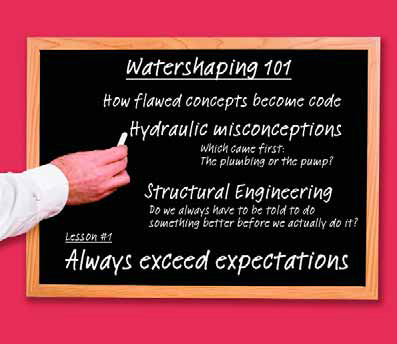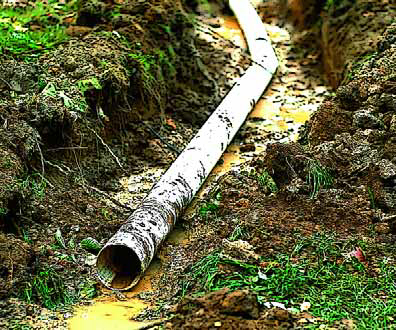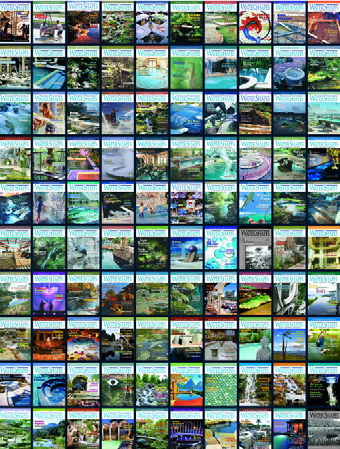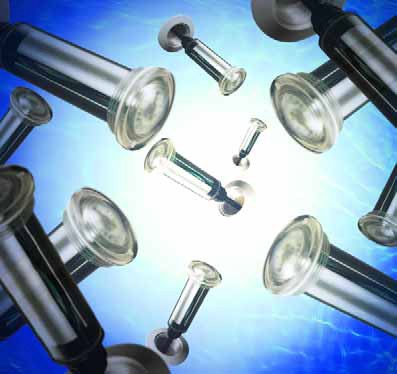During the past year, I’ve had the pleasure of teaching hydraulics to watershapers in a variety of classroom settings. It’s been exciting, believe me, particularly because of the eagerness of the students and their hunger for good information. These courses, which have been presented under the auspices of Genesis 3, ask a lot of the students who sign up for them. Especially given the tight economy, I find it enormously encouraging that so many people are focused on spending the time and energy required to
I’ve expended lots of ink in recent issues extolling the virtues of good water management, but that’s nothing new: Through the years, in fact, I’ve written copiously about the need for conservation and sensible stewardship of the most precious of our natural resources. And this all makes sense, given both the needs of our society and the fact that we who read and write for WaterShapes all derive some portion of our livings from the work we do with water. On those levels and more, water may be seen as our
The great poet and philosopher John Donne once wrote, “No man is an island” – a wonderfully simple declaration that none of us is really alone and that we all exist in a world filled with others. There are exceptions, of course, and I’ve run into my share of loners who resist the notion that we are all interdependent on some level. But as I’ve moved through the world and have met people I perceive to be talented or successful in some way, it’s been my observation that they have substantial support systems of one sort or another. That support may come from a spouse, a life partner, a live-in companion or a boy- or girlfriend. Or it may come from
As is true of businesses coast to coast, we at WaterShapes are counting the days until the economy turns around. We do so confident that economic trends are cyclical and that good times have always replaced the bad. But this particular recession has been deeper and longer than most among us have ever witnessed, leaving many companies – including ours – to hunker down and make what we can out of thin stocks of available business. As has been suggested numerous times in the pages of our magazine, however, this is no time for rash
So much has been written and said about our current economic situation that it can get pretty depressing. One thing I hear and read over and over is that “Many people are just stuck, waiting and hoping for things to change.” I can’t help noticing that, for lots of people in government and major industries as well as in small businesses and sole proprietorships, this approach means doing the exact same things they were doing when their days were fat with opportunities. Personally, I think that’s crazy! I believe if I want my situation to change, good times or bad, I must change myself from within and can’t afford to wait for external forces to push me toward prosperity – especially not these days, when nobody really knows what’s
Boston’s Big Dig was essentially a Big Fix. Officially known as the Central Artery Tunnel Project, it served to repair damage done to the heart of the city by the Interstate Highway program during the 1950s and ’60s. In Boston’s case, the federal government had stepped in and inserted a primary traffic artery through what had been a downtrodden area near the waterfront. Its intentions may have been good, but I-93 ran north to south and separated the city’s historic downtown area from its storied waterfront – a disastrous decision that did little more than create decades’ worth of traffic nightmares. Ultimately, it also required remediation on a scale seldom seen in the course of human history. Planning for the project began in 1982, initiating what would become
In January 2008, southern California’s Orange County Water District unveiled its Groundwater Replenishment System, a treatment and reuse facility dedicated to producing water to resupply the county’s beleaguered groundwater reserves. A year later, Eric Herman toured the facility, getting a behind-the-scenes look at a thought-provoking system that is setting new standards for water treatment, management and use. While I was preparing our “True Green” issue for publication last summer, a friend invited me to tour the Groundwater Replenishment System, an advanced, 70-million-gallon-per-day water-purification facility located in Fountain Valley, Calif. The invitation to visit this joint project of the Orange County Water District and the Orange County Sanitation District came through
On a recent trip to Spain, Paolo Benedetti and his family took a side-trip to Portugal and happened on some Roman ruins that opened his eyes to a whole new set of possibilities. Here, in a most unusual ‘Solutions’ piece, he describes his encounters with the technologies used to heat an ancient residential indoor swimming pool as well as a collections of pools that made up the public-bath system for a seaside outpost of the Roman Empire. As a pointed expression of the growing global concern over the earth’s changing climate, lots of my clients these days are asking me about alternative methods for heating their pools. It’s a reasonable concern, and I don’t think it will be going away anytime soon. Part of the problem in answering these questions is that neither I nor my clients want to go out on technological limbs and invest in leading-edge or green ideas that have yet to prove themselves. The rest of it probably has to do with the phenomenon of
Last month, we began our discussion of a large pond, stream and waterfall system for a historic upper Midwest estate found on the forested shore of a scenic lake. As related there, the project was to include three major ponds and a series of complex waterfall structures connected by streams rising close to the top of the gently sloping property. To sum up, the space we were working with measured approximately 300 feet wide and 800 feet long – a large section of a 35-acre estate marked by scores of mature trees that largely governed the watershapes’ configurations. Moreover, as there were no natural rock formations or outcroppings on site, we faced the need to
It has always bothered me: Why do we take devices that draw electrical current and install them in aquatic environments where humans get in the water? Even if precautions are taken, isn’t this risky business? To be sure, suppliers have come up with all sorts of measures designed to protect bathers from any potential hazard, and I have nothing but praise for the ingenuity they’ve displayed in surrounding their products with safeguards that minimize concern. But based on my own observations and experience, I must say that






















